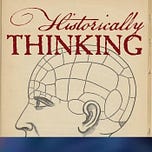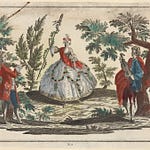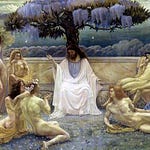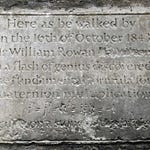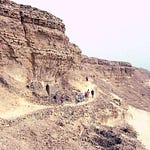September 9, 2025 (Episode 423)
Introduction
Each year millions of tourists visit the Czech capital, awed by its blend of architectural styles and dramatic landscape. St. Vitus’s Gothic cathedral towers above the Charles Bridge and the Vltava River, while winding alleys lead to elegant squares lined with Renaissance palaces, Baroque statues, and modern glass structures. Yet this beauty obscures centuries of conflict — ethnic, religious, political, and more typically mundane conflicts— beginning when Prague was just a fort on a hill above a river. Presumably it wasn’t built there for the view.
In her new book, Prague: The Heart of Europe, Cynthia Paces traces the city’s history from the late ninth century, when Slavic dukes built the first fortifications and church, through eleven centuries of triumph and tragedy. Prague has been both an imperial center of a great empire and a city on the periphery of empires—several of them. It became a European capital of art, politics, and pilgrimage, endured religious wars and defenestrations, and was nearly destroyed in the Thirty Years’ War. At the beginning of the twentieth century it was celebrated as a beacon of democracy, only for its citizens to endure violent antisemitism, Nazi occupation, and communist repression — before once again becoming a beacon of democracy.
Through her story of Prague we come to understand the truth of Franz Kafka’s observation: “Prague does not let go; this little mother has claws.” Our conversation moves across centuries of wars, saints, emperors, rebellions, and revolutions to show why Prague still grips the imagination.
About the Guest
Cynthia Paces is Professor of History at The College of New Jersey. She is the author of Prague Panoramas: National Memory and Sacred Space in the Twentieth Century and co-editor of 1989: The End of the Twentieth Century.
For Further Investigation
Cynthia Paces, Prague: The Heart of Europe (Oxford University Press, 2025)
—Prague Panoramas: National Memory and Sacred Space in the Twentieth Century (University of Pittsburgh Press, 2009)
Chad Bryant, Prague in Black: Nazi Rule and Czech Nationalism (Harvard University Press, 2007)
Derek Sayer, Prague, Capital of the Twentieth Century: A Surrealist History (Princeton University Press, 2013)
Related Episodes
💬 Listen & Discuss
How does Prague’s geography help explain its importance across European history?What does the Prague Spring reveal about the continuing interplay in Prague’s history of freedom, repression, and resilience? Share the podcast with someone who has visited Prague, or who has always meant to.

